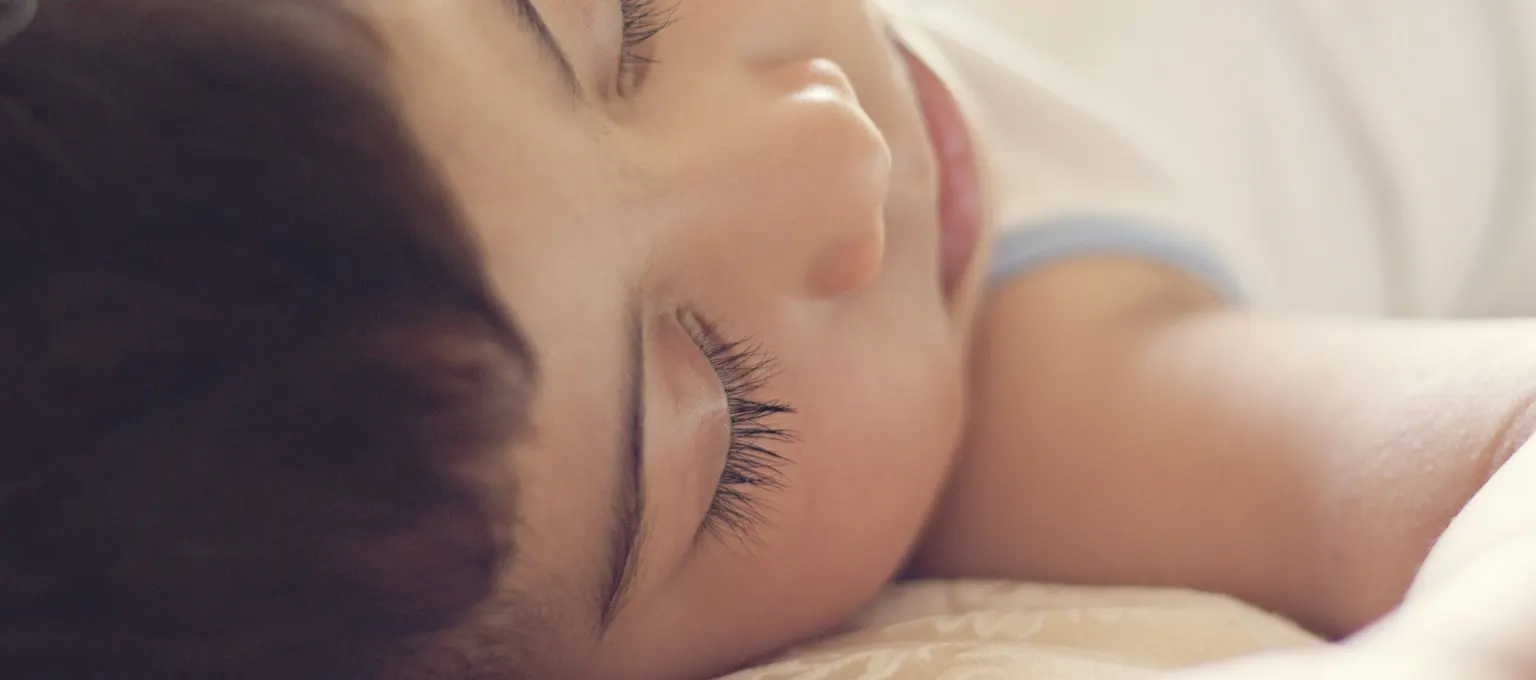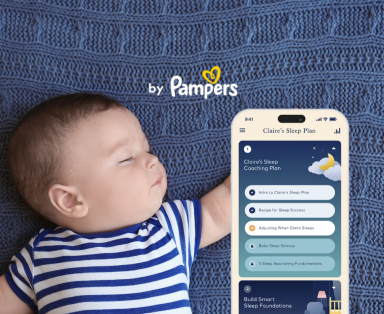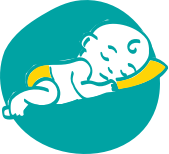The Most Common Misconceptions about Baby Sleep
IN THIS ARTICLE
Before we became parents, the idea of spending time discussing, googling, and reading about sleep would have seemed odd. Then parenthood rolls around and it is astounding how much of our time is spent learning about the science of sleep and how it pertains to our baby. It becomes instantaneously relevant the moment we bring baby home.
For parents whose babies aren’t naturally good sleepers, the topic of sleep is not only relevant, but it borders on feeling urgent as we scroll for answers at 3 am. For that reason, I am happy to share and clear up the biggest misconceptions I hear over and over again that are the cause of so much confusion.
Misconception 1: Babies will eventually learn to sleep on their own, there is no reason to sleep train.
Most newborn babies can sleep anywhere, anytime, under nearly any conditions. They are, by their very nature, “good sleepers” because they don’t yet have mature circadian rhythms, also known as the sleep/wake cycles. Newborns require so much sleep, the odds are good any time you look at them, they will be asleep. Because of this, many parents have a false sense how advanced their baby is in the game of sleep.
When the newborn stage ends, their circadian rhythms mature, and all of the sudden, about 40% of those babies who just last week were champion sleepers, are no longer able to sleep. Sixty percent of parents just get lucky and their babies are naturally great sleepers, no effort required. For those parents whose babies are in the remaining 40%, those little ones will require some help, or training, in getting them in a great sleep cycle.
Misconception 2: Babies need to be taught the difference between day and night, by napping in the light.
Many parents let their baby nap during the day time in the light so they will learn the difference between nighttime and daytime. But the truth is, if your baby is under 12 weeks it’s still too early for them to learn the difference between night and day and they will be up many times no matter what time of day it is. Your newborn is up purely because she is brand new to the world and needs nourishment around the clock. As your baby gets older, it’s still best to put them down for a nap in a dark room. Your baby sleeps better in the dark because melatonin secretion is higher when there is no light. In between naps is a great time to pull the curtains open and let that light shine in. It’s also a great opportunity to go for a little walk for some fresh air and sunshine.
Don’t miss these must-watch sleep tips from a pediatric sleep consultant.
Misconception 3: Pacifiers are something I shouldn’t ever introduce to my baby.
So many parents are afraid of pacifiers. They don’t want to introduce a bad habit that eventually the baby will be “hooked on”. The truth is, not only are pacifiers perfectly fine for babies to have, the AAP is also telling us that using a pacifier may even reduce the risk of SIDS.
There is a slight, but important, divide I should mention here. If your baby cannot find and replace his own pacifier when he spits it out, then you should consider taking it away. If your baby is old enough to find and replace their own pacifier once it falls out, then not only should you keep using it, you should toss a few extras in there just to increase the odds that they will find one without calling for you to help them. Little babies who need help replacing it, are better off not having one.
Misconception 4: Later bedtime means later wake up time.
Most babies naturally wake up between 6am-7:30am. Babies have no desire or really, ability to sleep in. This may come as a disappointing surprise for many parents who just want a few more hours of sleep. This isn’t to say it isn’t worth a shot to give a later bedtime a try, you might have a baby who goes against the grain, and actually will sleep in. Just be mindful that the odds are good your baby is like most, and the later bedtime not only won’t result in sleeping in later, it actually will cause earlier than ideal wake ups.
By putting your baby to bed later, it means you are passing over your child’s natural sleep window when melatonin secretion is at its peak, which causes the melatonin to cease, and the production of adrenaline to begin. Adrenaline at bedtime causes frequent night wakings and early morning wake-ups. Going to bed during the optimal sleep window (between 6:30pm-8pm depending on the child’s age) means you are getting them in bed during the peak secretion of melatonin and you are not allowing the production of adrenaline.
Misconception 5: All sound machines are created equal.
There are many things we can do to help our babies fall asleep, but one of the most important that I always recommend is a quality sound machine. But, surprisingly, not all sound machines are effective in helping your baby sleep. When looking for a sound machine for your baby’s room, look for one that has fan sounds as well as brown, pink and white noise. A 1990 study found that white noise is beneficial in helping your baby fall asleep and stay asleep. Make sure the machine you buy has the ability to be turned up loud, as the sounds are meant to mask outside sounds and raise your baby’s arousal threshold. Perhaps most importantly, find a sound machine that is made by sound experts. This will ensure the quality of the speakers and the sound itself provides the optimal soothing sounds to keep your baby asleep.
Misconception 6: All sleep rules apply to all babies.
The reason many of you have read so many sleep books and are still left feeling stuck is because every baby is unique. If you’re a parent of more than one child, you know that what worked for the first, might not work for the second. Unfortunately, we cannot apply all sleep rules to all babies without consideration for variables like age, weight, feeding habits, their unique personality, their sleep environment, teething or fevers looming, etc. It’s best to try many things and figure out what works for your baby, then stick to it. You can also speak with your pediatrician or a sleep coach to find out how to best fit your baby’s needs.
Misconception 7: You can’t avoid the 8-10 month regression.
Every family I work with is terrified of the dreaded 8-10 month regression. I like to spread the joy, so here comes the best news you will hear all day: The 8-10 month regression is TOTALLY preventable. The name is misleading, it should be called the 8-10-month-nap-disaster-nighttime-horror-show-regression phase. However, that is decidedly less catchy.
The reality is, between 8 and 10 months, your baby will go from three naps down to two naps. This transition often causes babies who previously slept great at night to suddenly be waking up multiple times a night and waking up early. Seemingly, there is no correlation. The mistake parents unknowingly make, is not adjusting bedtime when they drop the third nap. When bedtime remains the same, but the third nap is no longer happening, the result is that your baby is awake too long in the evening. This causes the adrenaline response we discussed up above in #4, and about a week or so into the new two-nap schedule, nights will begin to fall apart.
You can completely bypass this phase by simply making sure your baby has an early bedtime for about two weeks after you drop that third nap. After two weeks, you can go back to the regular bedtime, or if you want to ease back up to that time, go up by 15 minutes a night until you are back at the regular bedtime.
Misconception 8: Babies need to be on a set schedule for naps.
While your baby needs a routine and a certain amount of sleep each day, it should not be determined by the actual clock. Rather than making a set nap schedule based on what time it is, I always recommend parents make their nap schedules based on awake intervals and sleep cues instead. Rather than saying, “It is 9am time for nap one" I encourage you to say, “you have been awake for 2.5 hours and you are showing sleep cues, so it is time for nap one.”
The danger of setting a schedule by the clock is that you might be keeping your baby up too long, or putting them down too early. Fifteen to thirty minutes can really make a big difference in your baby’s ability to nap nicely. The rule is, keep one eye on the clock and one eye on the baby while asking yourself these two questions:
Are we nearing the end of my baby’s appropriate awake interval?
Is my baby showing sleep cues? (Glazed over eyes is the big one you want to look out for.)
If these are both yes, then it is nap time. Once you do this for two weeks, your baby will naturally fall into a rhythm and schedule that is roughly the same time every day.
Misconception 9: Formula fed babies and babies on solids sleep longer.
Yes, it is true that babies digest breast milk faster than formula and solids and therefore their tummies are empty sooner. However, after 12 weeks of age, waking up at night is almost never about waking up for nourishment. The wake-ups at this point in babyhood are a learned behavior, not a true need to eat.
Always check with your pediatrician, but as long as your baby is 12 pounds, over 12 weeks and your pediatrician is happy with the rate at which they are gaining weight, feeding through the night is no longer needed for nourishment. Night feedings after that point are happening out of habit and comfort rather than actually needing to eat. When night feedings are dropped, your baby will still have the same caloric intake over a 24 hour period, it will just be redistributed during the day. Feedings will be longer, bottles will be a bit bigger and your baby will learn not to wake up at night to eat. Achieving “longer sleep” is about your baby learning to self-soothe in between sleep cycles, not about staying full.
Misconception 10: Sleep training works better on older babies.
We look at our sweet little 3 month-old baby after our pediatrician gives us the green light to sleep train, and we think, she’s too little! I can’t do this when she is so sweet & little. We will wait until she is 6 months old. Then at 6 months we are surprised to discover she still looks too sweet and too little to sleep train, so we put it off another few months. You see where this is going. Before you know it, you are trying to sleep train a toddler who can stand up, call your name and ask to borrow the car this weekend. If you think hearing your little baby cry pulls at your heart strings, imagine hearing them cry while calling your name. The reason the magic age for sleep training is so young (3-5 months) has everything to do with avoiding upcoming hurdles. At this young age, your baby:
Is less likely to be teething.
Is guaranteed not to be going through separation anxiety yet.
Can’t say mommy or daddy yet.
Has far less awareness of his or her environment because they are not yet sitting (without help) or pulling up to stand.
All of these are hurdles that make sleep training more challenging the longer you wait. The biggest reason it is best to sleep train early, is that sleep training is really just behavior modification and teaching a new skill. The fewer months of poor sleep habits a baby has behind them, the easier it will be to change those old habits. Just like any bad habit you and I have, the longer we have been doing it, the harder it is to change.
Misconception 11: Sleep training is harmful and neglectful.
Before we address this one, remember to do what feels best for your baby and what is most aligned with your parenting values. That being said, if we are purely talking about empirically supported data collected from sleep training studies; sleep training is not harmful or neglectful. There are no valid studies that support the claim that sleep training and the consequent secretion of cortisol, has a long term or short term harmful effect on babies.
To the contrary, there is a respected body of research showing that sleep training not only isn't harmful, but that the outcome of sleep training (restorative sleep) directly and positively affects cognitive development, mood regulation, and memory consolidation. Children who underwent behavioral sleep training in a long-term study over 6 years, were securely attached to their parents and had lasting healthy sleep habits. If your pediatrician is happy with your baby's weight gain, and gives you the go-ahead to start, then you can also reassure yourself that you are not embarking on a dangerous journey for your baby. The only outcome of sleep training is a baby who knows how to independently sleep through the night and who actually reaches for their crib asking to be put down when they are sleepy.
Misconception 12: Once a toddler can climb out of the crib, it is time to move to a toddler bed.
You definitely don’t want your child at risk of falling out of their crib in an attempt to climb out. So it makes sense that you would move them to a toddler bed. There are two major points that parents tend to miss. The first is that you can keep your child in the crib and prevent them from climbing. The other point parents miss is the fact that once you move your toddler out of the crib you, now have a 2 year-old who can get up anytime during nap or night sleep and play with toys, come to your bed, etc, instead of laying back down and going back to sleep.
Moving your child to a big kid bed before age three is problematic because the behavioral tools that will work to keep a 3 year-old in bed will not be effective on a younger child. Please wait until your child is three before you move them to a big kid bed. When they begin to climb, you can do three things, I suggest you do all of them if needed:
From infancy, always put them to sleep in a sleep sack so they can be used to it. A sleep sack is like a wearable blanket that zips up and has arm holes. In the beginning, this is practical for staying cozy, but when they are at the age where they begin to climb, it actually prevents them from getting very far because their legs are inside the blanket. If they are particularly clever, they may unzip it. In that case you put it on them backwards.
Lower the mattress all the way. I don’t mean to the lowest setting that the crib offers. I mean, take out your tools and take the mattress off of the crib frame completely, and put it on the floor inside the crib frame so it is as low as possible.
If they manage to climb from the mattress on the floor, in the backwards sleep sack, then your last resort option is spend three days of naps and nights putting them back in. Over and over and over again. Each time your toddler gets out, say, “No Climbing”. It is a tedious three days. But the reward is your child stays put.
While in theory it makes sense to move to the toddler bed, it is impractical when you have a toddler on the loose!
Misconception 13: Setbacks like time zone changes, teething, and illness put you back starting from scratch.
The thinking here is half way right. Yes, teething, illness, and travel can absolutely affect sleep. However, a sleep trained baby is going to bounce back from those changes much more readily than you think. I like to give my parents the hair coloring analogy. The first time you dye your hair, it is expensive and time consuming because you are coloring from the roots to the tips. The following appointment is much shorter and less expensive because you are only touching up the roots. Most of the hair is done so it isn’t a big long ordeal at the subsequent appointments. Sleep training is the same. The first time you do it, it takes longer, there will be tears (sometimes quite a few) to get through. Once it is done though, the positive habit is formed, the skilled is gained and the baseline familiarity does not leave.
So when you come back from another time zone or come out of a week of sleep being off for any reason, you will only need a few days of reminding your child of the sleep routine for them to bounce back. It will take less total time, the tears will taper sooner, and the intensity will not be what it was the first time. You are merely “touching up the roots,” if you will.
Misconception 14: I am anchored to my house once my baby is sleep trained.
This is a common fear and question. The answer is yes, for the first two weeks I always suggest 100% consistency and doing all naps and all bedtimes on time, in their crib, in the proper sleep environment (dark with a quality sound machine) and with the correct sleep cues leading up to bedtime. In those two weeks, be ready to hunker down and don’t make dinner plans or schedule any day trips.
After those first two weeks, I recommend parents to live by the 80/20 rule. Eighty percent of your child’s naps and nighttime sleep should happen in their crib and on schedule. The other 20% allows for the flexibility we all need in life. As long as most sleep is happening on a consistent predictable schedule in an environment most conducive to sleep, then the other 20% that happens in strollers or in a friend’s guest room are not going to ruin all of the hard work your family did sleep training.
There is a lot to learn when it comes to your baby’s sleep. But the knowledge that you have can help equip you and your baby to become better sleepers.
Related Articles:
Join a World of Support
through Pregnancy and Parenthood.
TRACK WITH TOOLS
LEARN WITH EXPERTS
GET REWARDED












